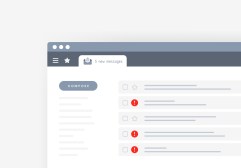Mastering the Art of Balancing Short-Term Needs with Long-Term Goals
In today’s fast-paced world, finding the right equilibrium between short-term needs and long-term goals can be a complex challenge. Many individuals and organizations often find themselves caught in the weeds of immediate demands, losing sight of their overarching aspirations. This article explores strategies for effectively balancing these two critical aspects to achieve sustainable success.
Understanding Short-Term Needs
Short-term needs typically refer to immediate requirements that must be addressed for survival, productivity, or performance. In a business context, this might include meeting quarterly revenue targets, responding to customer feedback swiftly, or managing day-to-day operations efficiently. For individuals, short-term needs can manifest as paying bills on time or meeting project deadlines. Recognizing these demands is crucial since they often dictate daily activities and can influence long-term planning if not managed well.

Defining Long-Term Goals
Long-term goals are broader objectives that provide direction and motivation over an extended period. These could involve career aspirations such as achieving a specific job title, financial goals like saving for retirement or education funds, or personal development objectives like mastering a new skill. While they may take years to accomplish, having clear long-term goals helps guide decisions made in day-to-day life and ensures that short-term actions align with overall vision.
Creating a Balanced Strategy
To effectively balance short-term needs with long-term goals, it’s important to create a strategic plan that accommodates both aspects. Start by identifying your primary long-term goals and breaking them down into smaller milestones that can be achieved in the short term. This approach allows you to make progress toward your larger aspirations while still addressing urgent tasks. Prioritizing tasks based on urgency and importance will enable you to allocate resources wisely without compromising your future plans.
Regularly Reviewing Your Progress
Balancing these two elements is not a one-time effort; it requires ongoing assessment. Set aside regular intervals—such as monthly reviews—to evaluate your progress towards both short- and long-term objectives. This practice will not only help you stay focused but also allow adjustments when needed based on shifting priorities or unforeseen challenges. Adaptability is key in maintaining this balance.
Embracing Flexibility for Success
Lastly, cultivating flexibility within your approach is essential for mastering this art. Life is unpredictable; hence being rigid about either short-term demands or long-range dreams may hinder progress in one area while overemphasizing another. Embrace changes in circumstances by reassessing priorities regularly and adjusting timelines as necessary without losing sight of your ultimate objectives.
In conclusion, successfully balancing short-term needs with long-term goals involves understanding both dimensions clearly and developing strategies that integrate them seamlessly into daily life or business practices. By creating actionable steps toward achievement while remaining adaptable to change, you can forge a path toward sustainable growth and fulfillment.
This text was generated using a large language model, and select text has been reviewed and moderated for purposes such as readability.











